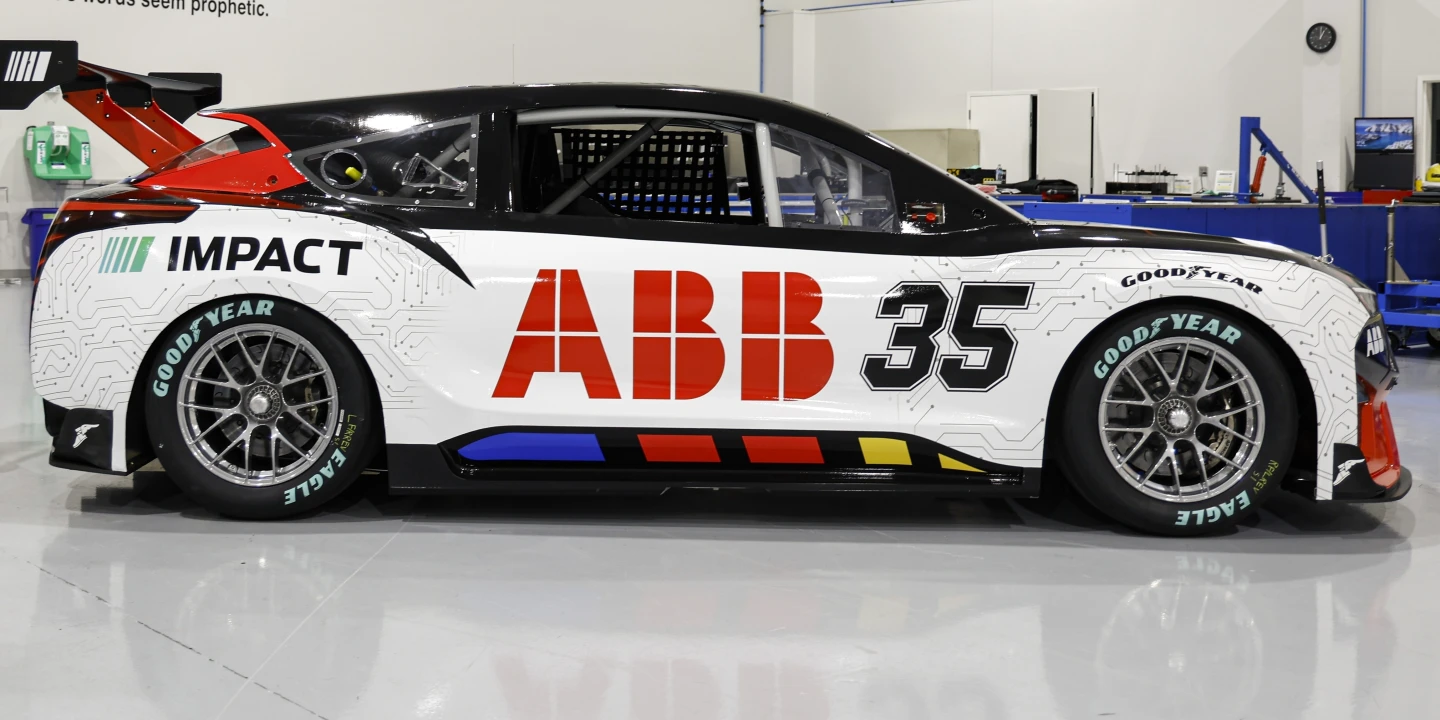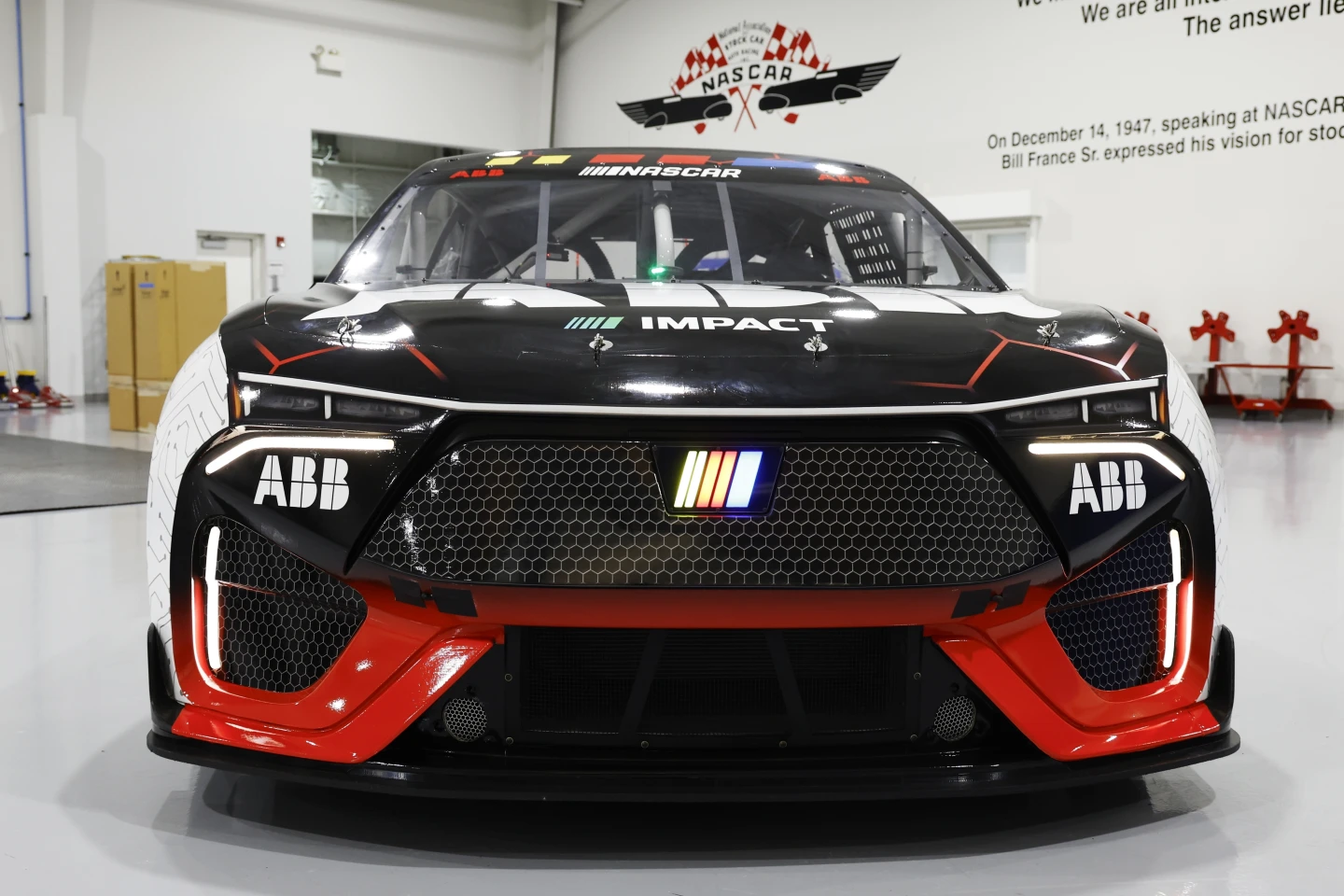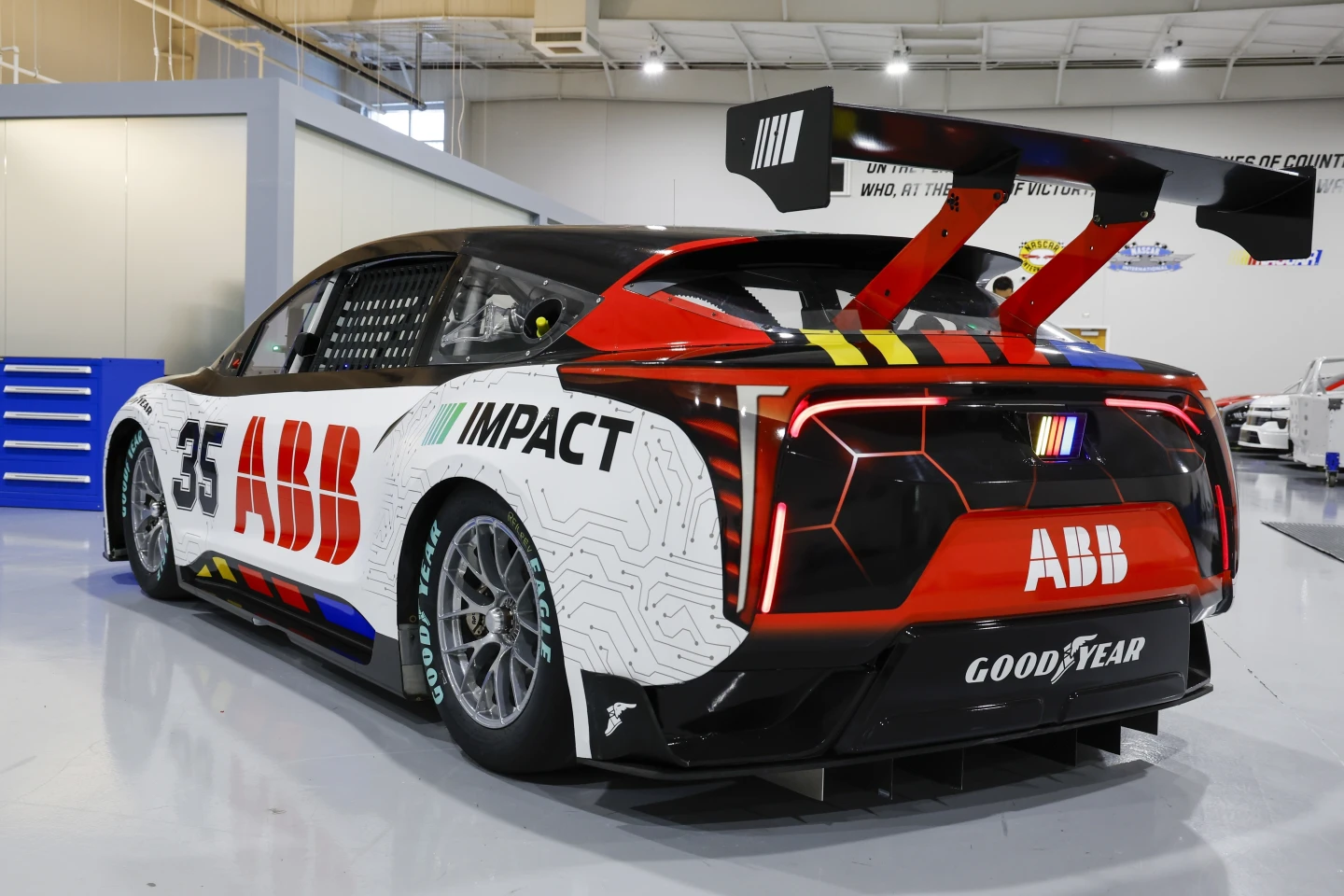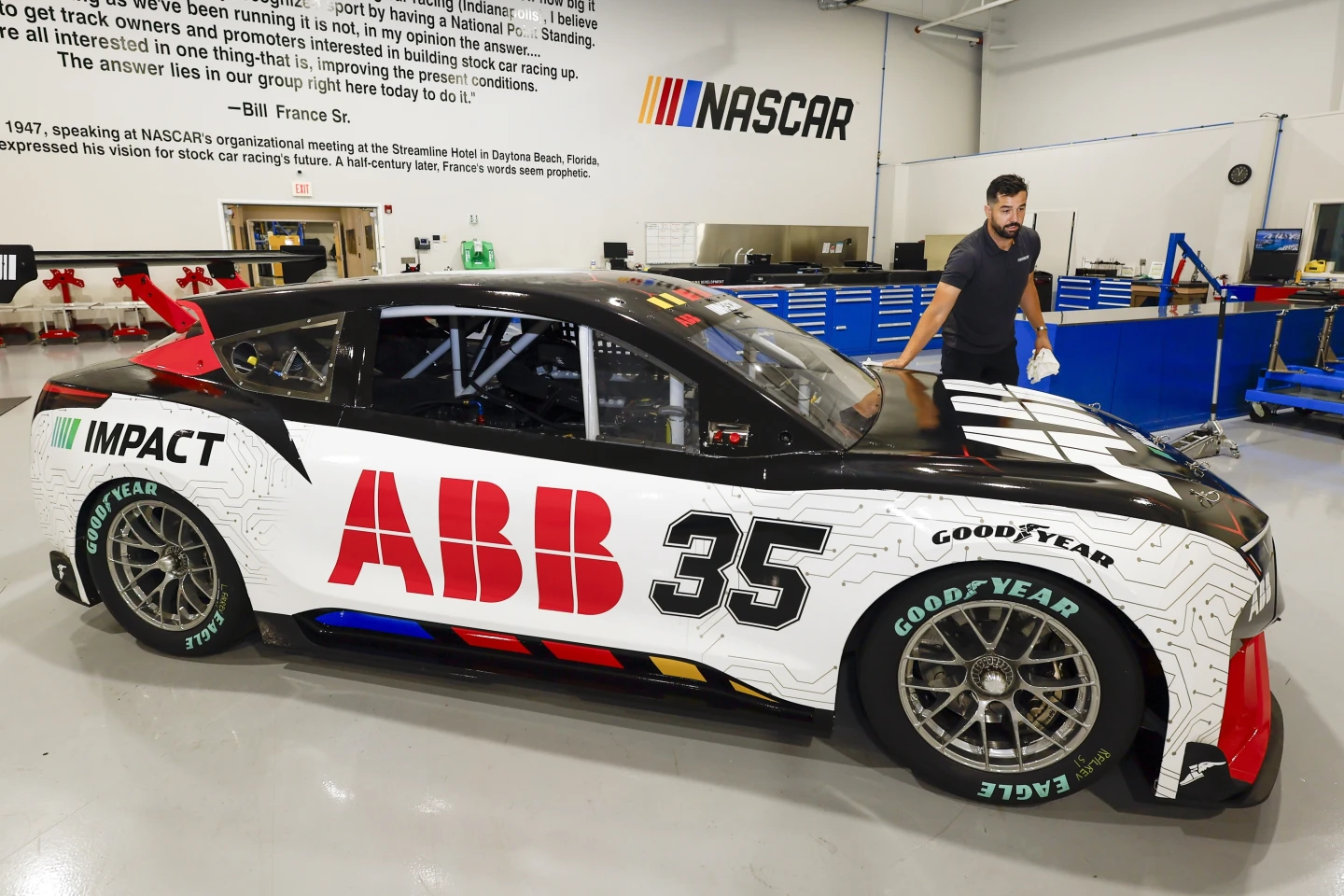Part of the NASCAR race experience involves the loud engine noises, the sound of cars approaching, and the speed as they zoom past at over 150 mph.
NASCAR introduced its first electric racecar in Chicago on Saturday, but unlike traditional races where engines roar at the start, this car emits a quiet hum.
The premier motorsports series in North America collaborated with Chevrolet, Ford, Toyota, and ABB, an electrification company, to showcase a high-performance electric vehicle and assess fan interest in electric racing.
They aim to portray electric vehicles, and electrification in general, as exciting, enjoyable, and accessible, according to Riley Nelson, NASCAR’s sustainability chief.
The Associated Press was given an exclusive look at the $1.5 million prototype. Semi-retired NASCAR driver David Ragan has been the only person to drive it so far. He noted that the experience was unlike anything he had encountered since beginning his racing career at age 11.
Ragan could hear the squealing tires and smell the brakes. Unlike gasoline-powered cars, where engine noise, exhaust smell, and heat dominate, this electric car left his ears unringing after hundreds of laps. He described it as a truly unique experience.

In contrast to typical sports cars, this new vehicle is actually a crossover utility vehicle, designed with a large wing at the rear to ensure aerodynamic performance suitable for racing.
It accelerates nearly twice as fast as top gas-powered racecars and can brake almost instantly. However, its lap time at Martinsville Speedway in Virginia was slightly slower by two-tenths of a second because it takes corners more cautiously due to its heavier weight.
Ragan mentioned that it might go even faster; he wasn’t pushing the unique vehicle to its limits. He emphasized that racing involves risks, but testing is about caution.
Eric Warren, who oversees global motorsports competition at General Motors, mentioned that research showed over half of dedicated NASCAR fans surveyed would consider buying an electric vehicle if introduced to it through racing. He highlighted the importance of managing energy carefully and making it more efficient.
“We’re committed to electric vehicles,” Warren affirmed. “Racing provides a great platform to discuss these ideas and educate fans. It’s like a laboratory where we can test new technologies and learn as we educate.”
Burning gasoline releases pollutants into the air and produces carbon dioxide, which contributes to global warming and more extreme weather. According to the U.S. Energy Information Administration, burning one gallon of gasoline produces around 19 pounds of carbon dioxide. Racing events use thousands of gallons of fuel in a single weekend.

If NASCAR decides to move towards electric racing, John Probst, NASCAR’s senior vice president and chief racing development officer, believes they could transform the fan experience. One idea could involve having a DJ to enhance the atmosphere.
“Our goal is to keep our fans entertained,” he said. “If our fans tell us this is what they want to see, we know how to create a racing series around almost anything.”
NASCAR isn’t the first racing organization to enter electric car racing. Formula E, which began ten years ago, focuses entirely on electric racing. However, its fan base is much smaller compared to NASCAR’s.
The new car is part of NASCAR’s broader plan to be more environmentally friendly. ABB, now NASCAR’s official partner for electric technology, will help NASCAR increase its use of electricity from renewable sources.
NASCAR also owns 15 tracks across the U.S., many near major highways. ABB plans to install electric vehicle charging stations at these tracks, which will be connected to the power grid. These stations will be compatible with regular electric cars and open for public use, not just for race attendees.
By 2028, NASCAR aims to introduce sustainable racing fuel, recycle at all events, and use 100% renewable electricity at its facilities and tracks. By 2035, it plans to eliminate all operating emissions.

That’s why the car is adorned with the number 35, along with ABB, in black, white, and red. The car’s body is made from plant-based materials, specifically a flax-based composite by Swiss company Bcomp, rather than the usual carbon fiber.
NASCAR is also looking into racing with hydrogen-powered cars. IMSA, a sports car series owned by NASCAR, switched to hybrid engines in 2023. Another racing series, IndyCar, will debut its hybrid engines this weekend in Ohio. Formula 1 intends to use sustainable fuel in all cars starting in 2026 under new engine rules.
Ford Performance independently developed eight advanced electric demonstration vehicles in four years.
“Fans want to feel connected to the racecar,” said Mark Rushbrook, who leads Ford Performance Motorsports globally. “As more customers buy electric vehicles, we believe more people will want to watch electric racing.”
In the first half of this year, U.S. electric vehicle sales increased by 7%, according to preliminary data from Motorintelligence.com on Tuesday. Electric vehicles made up 7.6% of new vehicle sales in the U.S., similar to last year.
Michael Plaster, ABB’s Executive Vice President, hopes that kids who see the new car at NASCAR events will ask questions about a future powered by clean electricity. He believes some may even consider careers working on electrical technologies and solutions. ABB is investing billions to expand its business in the U.S.
“For generating interest and discussing the energy transition, there’s no better way to do it,” Plaster said.
